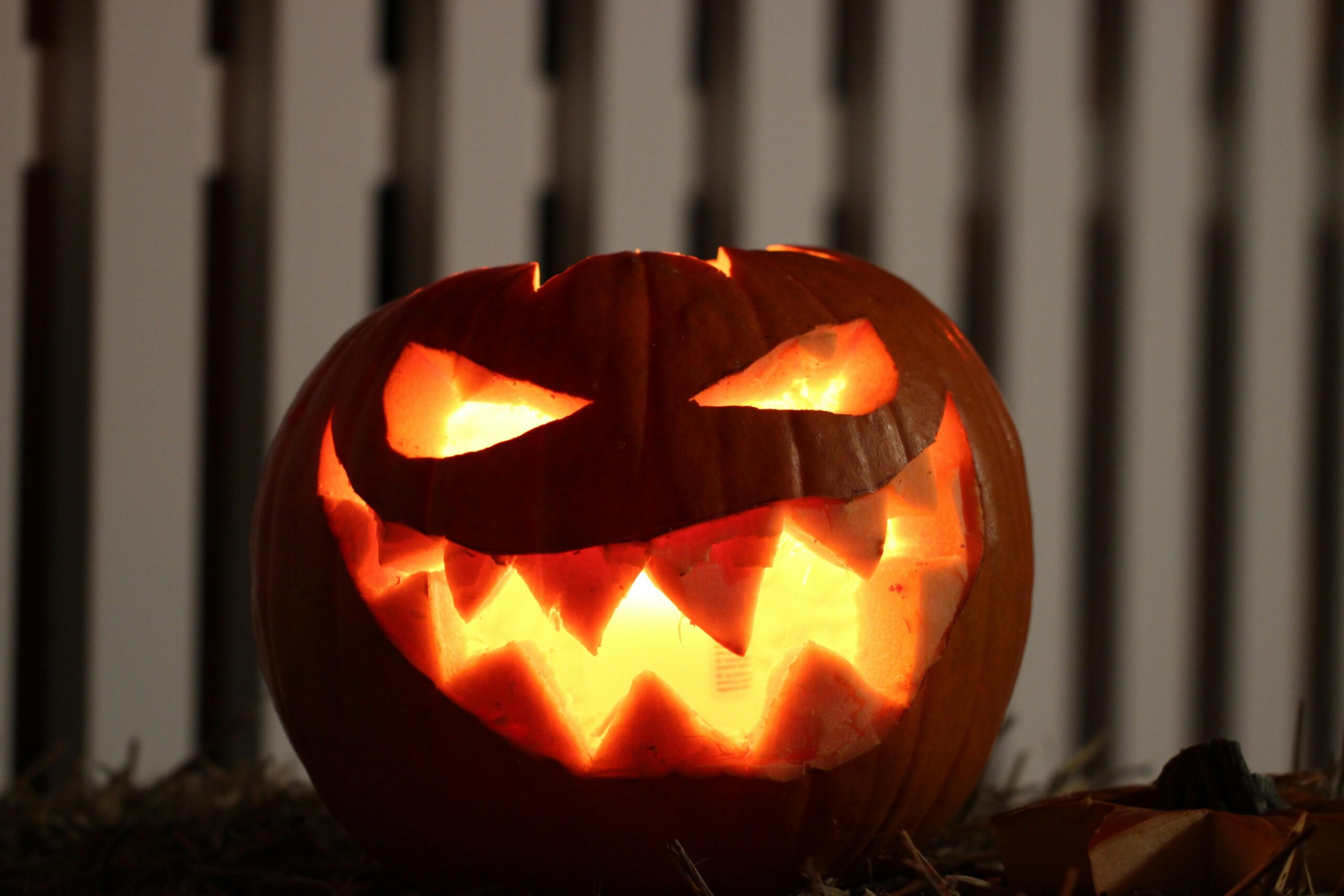Halloween in Kamloops means decorations of pumpkins, skeletons, superheroes, lights, spooky sounds, perhaps a visit to ‘the haunted house’ at the wildlife park, the pumpkin patch, a spooky tour around town, or at one time a ride on the 2141 Halloween Train.
Ever thought of where the name and customs of Halloween come from?
Autumn brings the celebration of a good harvest and start of winter. This celebration known as Samhain was celebrated by the Celts who believed the border between the living and dead was at its weakest at this time of year. Around the eighth century these holiday celebrations and pagan rituals were Christianized.
The Romans took over the Celtic lands around 43 CE and brought new legends and customs to honour the Roman goddess of fruit and trees. Her symbol was the apple. Today her celebration is found in the bobbing for apples.
Sometime around 1000 CE trick-or-treating became popular. Pagan practices were being replaced by Christian celebrations throughout Celtic lands of Ireland and Scotland. Oct. 31 was known as All Hallows’ Eve; the day following, known as All Saints Day, was a day to honour saints who held a place of remembrance for the people.
Nov. 2, known as “All Souls Day,” was a church day to remember those who had passed away during the year and allowed the poor to visit the houses of the wealthy and accept a ‘soul cake’, thereby promising to pray for their deceased relatives.
As the Scottish and Irish immigrated to Canada around 1800, they brought their harvest celebrations with them. All Hallows’ Eve was designated time to remember the numerous saints and martyrs of the Church. In Britain and Ireland this time of year marked the end of the harvest and the start of winter.
In Vancouver, BC, in 1898, was the first record of children dressing up. The term “trick-or-treat” was used in Lethbridge, Alberta in 1927. While these costumes were for fun, original costumes and disguises were to “ward off harmful spirits.”
In Scotland during the 1900s it was believed that a woman drinking a mixture made of walnuts, nutmeg, and hazelnuts, and who then went to sleep during Halloween eve would envision her future husband.
Spiders, if you spot one on Halloween, may actually be a special loved one keeping an eye on you, or so the legend goes.
Carving a jack-o-lantern came from Ireland via the legend of Stingy Jack. Jack was known to play tricks on the devil. When Jack died, God would not allow him in to heaven; neither did the devil allow him into hell. Therefore, Jack was exiled to the night as punishment, though the devil gave Jack an ember to light his way. Jack put the ember in a carved hole made in the turnip which served as a lantern becoming the pumpkin’s predecessor.
As immigrants from Ireland moved abroad they found that pumpkins were easier to carve.
Witches were always part of Halloween. The term “witch” was used negatively and led to the death of many. They were mostly women who were single, widowed, untouchable, and were thought to be outcasts and became referred to as “witch.’ They were thought to be wise due to their long life which gave them knowledge of herbs and healing, and it was this knowledge that betrayed them. Unfortunately, they became feared and were associated with evil and black magic.
During World War II, Halloween celebrations declined due to sugar rationing, but trick-or-treating was once again a common activity by the 1950s.
In Canada, UNICEF, distributed boxes to children who carried the boxes with them as they went from house to house and asked adults for spare change. The boxes were designated to assist children around the world. In 2006 UNICEF moved to donations made online.
COVID could have put a damper on Halloween, but households responded with clever ways of distributing candy, in bags or containers on doorsteps to complicated chutes where candy was sent down to the children waiting for a treat.
Costumes were originally worn to ward off ghosts but later were seen as a continuation of Christian observances and pagan rituals and now they produce merriment, tomfoolery, and the odd delighted screech as children of all ages dress-up, knock on doors, go to parties, and trick-or-treat.

